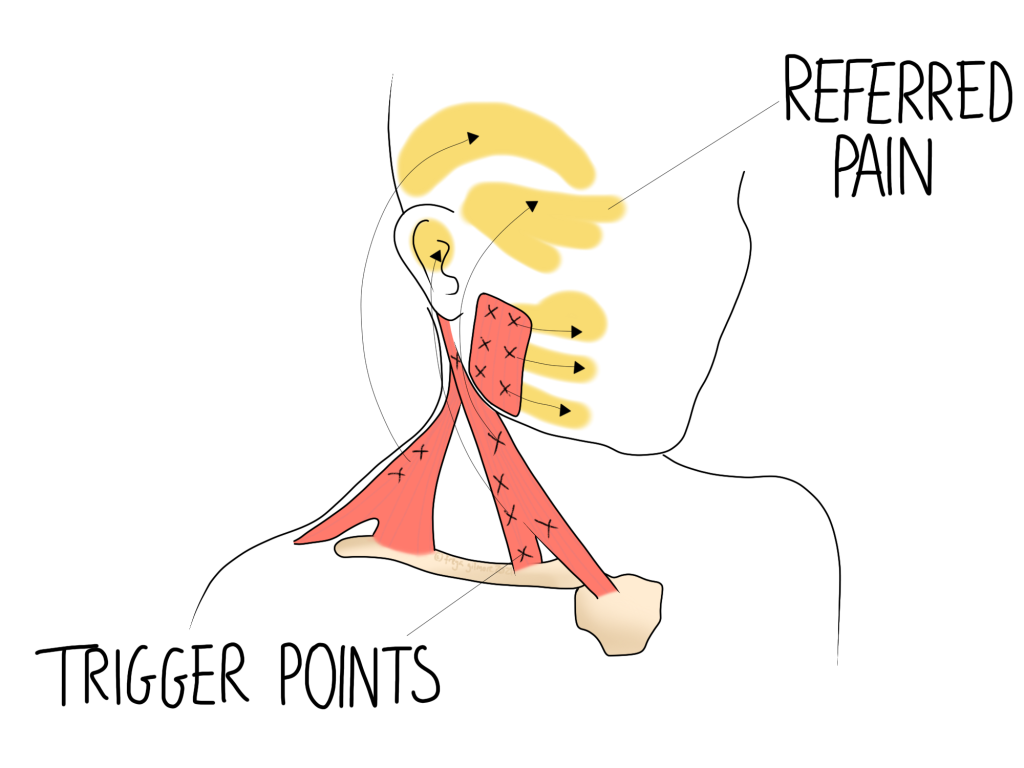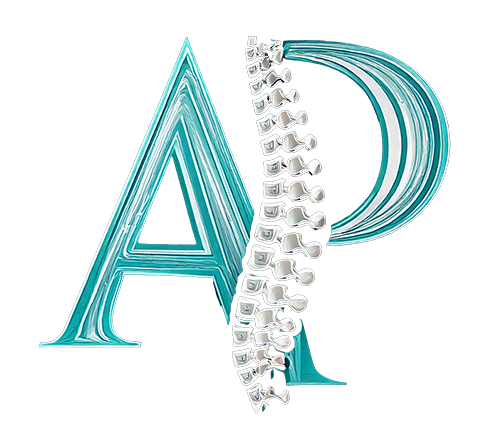Trigger Points
Everyone has experienced a “knotted” muscle at some point- but what happens if it doesn’t untangle itself? Longer lasting knots can become trigger points (TrPs), and left untreated they can behave in unexpected ways.

Symptoms of Trigger Points
The more common muscle knots can typically be massaged or stretched out, and are gone within a few days. But when they persist, we expect them to develop additional symptoms, such as:
- Tenderness within a muscle
- Pain characterised as a deep, dull ache
- Location easily pinpointed
- Some relief from heat and massage, but only temporarily
- Benefit from activity, but aggravated by extreme exercise, or holding a position for too long
Some of these symptoms overlap with more serious pathologies like rheumatoid conditions, so see a professional if they apply to you.
The symptoms change if the TrP is left untreated for too long. We consider anything lasting 3 months or fewer to be “acute”, whereas anything longer becomes “chronic”. Chronic myofascial pain, and chronic TrPs are more likely to be complex.
Chronic Trigger Points
Whereas acute trigger points behave like straight forward “knots”, chronic TrPs are different. The image above illustrates some referral patterns from muscles in the neck and face.
Referred pain is a relatively common occurrence. One of the most recognised patterns is when a heart attack comes with jaw or arm pain instead of chest pain. What happens here is the brain misinterprets the location of a painful stimulus, and causes symptoms in the wrong area. Although that sounds chaotic, it typically follows quite predictable patterns. Your osteopath will be on the lookout for these patterns, as they can often be disguised as something else. Muscles in the buttock, for example, can cause pain down the back of the thigh and be mistaken for sciatica.
Trigger Points within Other Problems
With referred pain in mind, it’s not surprising that TrPs are associated with chronic headaches and migraines, jaw pain, and lower back pain. One study found that the majority of patients sent to an orofacial pain clinic had trigger points at the root of their problem.
The image above shows some patterns associated with three muscles: the masseter, trapezius, and sternocleidomastoid. All three refer pain into the head and face, so all three could be mistaken as headaches or migraines. The masseter muscle (overlying the jaw) could cause pain that is misinterpreted as a problem with the jaw joint, or even toothache.
Causes and Predisposing Factors
TrPs can develop in response to an injury or traumatic event, or more gradually. Poor posture or other causes of persistently overloading a muscle could cause them if given enough time. Similarly, other conditions can allow them to develop, specifically other chronic pain conditions like fibromyalgia.
There are overlapping points between myofascial pain and fibromyalgia. One of these points is subclinical nutrient deficiencies. Myofascial pain syndrome has been associated with slightly low levels of B vitamins, vitamin C, folic acid, calcium, iron, and potassium. As the numbers are only slightly low, they may be disregarded after blood tests despite being significant.
Managing TrPs
TrPs often come with referred pain, which your osteopath is able to identify. This pain will resolve as the trigger point itself is managed. This might mean that your jaw pain is actually nothing to do with the jaw joint itself, but is all down to local trigger points. They might be local to the muscles involved in chewing, or they might be as far away as the top of the shoulder. Your osteopath will work to identify and minimise them.
Traditional acupuncture can be effective in managing TrPs. Dry needling, where the needle is inserted directly into the trigger point, has also shown to be beneficial. Some may also be responsive to direct massage work.
If you suffer from muscle knots or trigger points, book in today to see how we can help.

